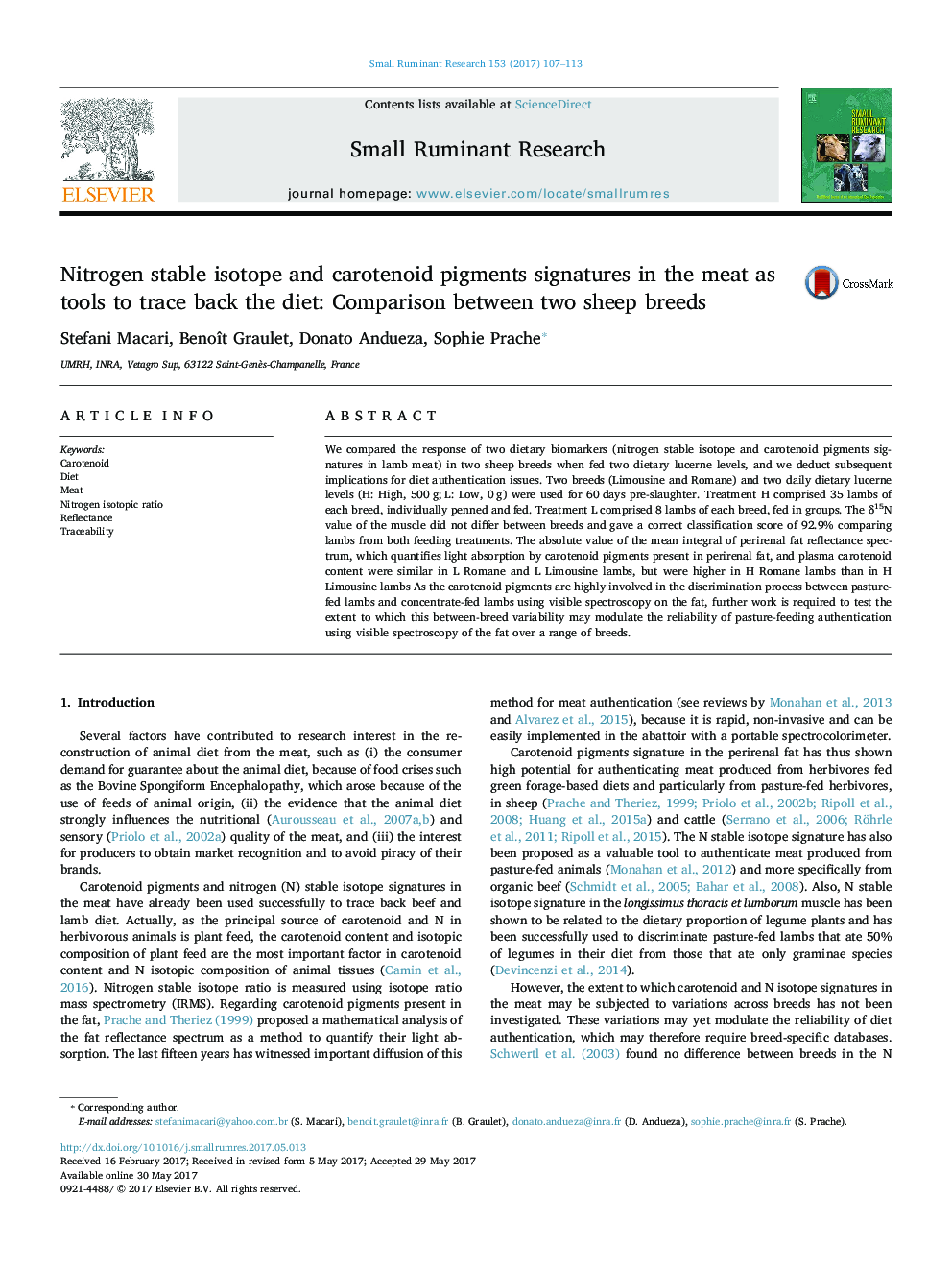| Article ID | Journal | Published Year | Pages | File Type |
|---|---|---|---|---|
| 5544097 | Small Ruminant Research | 2017 | 7 Pages |
â¢Two dietary biomarkers in two sheep breeds were investigated.â¢We compared two dietary lucerne levels and two sheep breeds (Romane vs Limousine).â¢Î´15N in meat did not differ between breeds and successfully traced back the diet.â¢Plasma carotenoid content and fat carotenoid signature differed between breeds.â¢Breed-specific database may be required when using carotenoid for authentication.
We compared the response of two dietary biomarkers (nitrogen stable isotope and carotenoid pigments signatures in lamb meat) in two sheep breeds when fed two dietary lucerne levels, and we deduct subsequent implications for diet authentication issues. Two breeds (Limousine and Romane) and two daily dietary lucerne levels (H: High, 500 g; L: Low, 0 g) were used for 60 days pre-slaughter. Treatment H comprised 35 lambs of each breed, individually penned and fed. Treatment L comprised 8 lambs of each breed, fed in groups. The δ15N value of the muscle did not differ between breeds and gave a correct classification score of 92.9% comparing lambs from both feeding treatments. The absolute value of the mean integral of perirenal fat reflectance spectrum, which quantifies light absorption by carotenoid pigments present in perirenal fat, and plasma carotenoid content were similar in L Romane and L Limousine lambs, but were higher in H Romane lambs than in H Limousine lambs As the carotenoid pigments are highly involved in the discrimination process between pasture-fed lambs and concentrate-fed lambs using visible spectroscopy on the fat, further work is required to test the extent to which this between-breed variability may modulate the reliability of pasture-feeding authentication using visible spectroscopy of the fat over a range of breeds.
